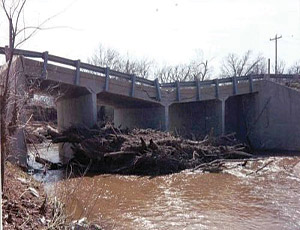Oklahoma is on a mission to ensure it never again wins the dubious honor of having the nation’s highest percentage of substandard bridges. The Oklahoma Transportation Commission this month approved a $4.3-billion, eight-year budget to fund 1,750 vital bridge and highway projects from 2011 through 2018. The transportation budget is the state’s largest ever, says Oklahoma Dept. of Transportation spokeswoman Terri Angier.

In 2002, the non-profit organization The Road Information Program (TRIP) reported that Oklahoma had the country’s highest percentage of structurally deficient or functionally obsolete bridges—33%, or about 1,500 structures. Since then, DOT has sought to catch up on a backlog of projects, a consequence of “underfunding transportation work for 40 years,” Angier says.
The new budget intends to speed up the effort to close the gap. “Even in 2004, the state still had 137 bridges whose capacities had been downrated to less than 15 tons,” says Angier. “That meant that even buses and emergency vehicles couldn’t use them.” Now, only 35 of those bridges still carry the rating for less than 15 tons.
The planned projects include some 650 bridge replacements or major rehabilitations and $2 billion in road reconstruction and safety upgrades. Angier notes that the proposed spending represents about $300 million more than the 2009 version of the rolling eight-year transportation plan, which is updated annually. Its $4.3-billion total is also more than twice the $1.8 billion Oklahoma allotted for its first eight-year road transportation plan, started in 2003.
The newly approved 2011-2018 budget averages $532.4 million per year. Angier says the budget counts on about 60% of federal funds and 40% of state funds each year, including a small portion from already-authorized bonding.
The transportation plan estimates that the state’s 40% contribution will grow from $62.7 million in 2011 to more than $279.2 million by 2018. Although Angier concedes that unforeseen recissions could happen, she says the projections for both state and federal funding “are based on conservative estimates.”
Almost all the state’s transportation projects are designed by consulting engineers, and many of the projects listed in the 2011-2018 budget are already in design.
Oklahoma law requires all construction contracts to be let through competitive bidding, so none of the work will be done using design-build or other alternative delivery methods.
One of the higher-profile projects in Oklahoma’s 2011-2018 transportation budget is a $140-million segment of a total $650-million relocation of Interstate 40 in Oklahoma City. About $400 million of work already has been completed on the 4.5-mile project. When the relocated 10-lane I-40 opens in 2012, the existing freeway will be demolished.

